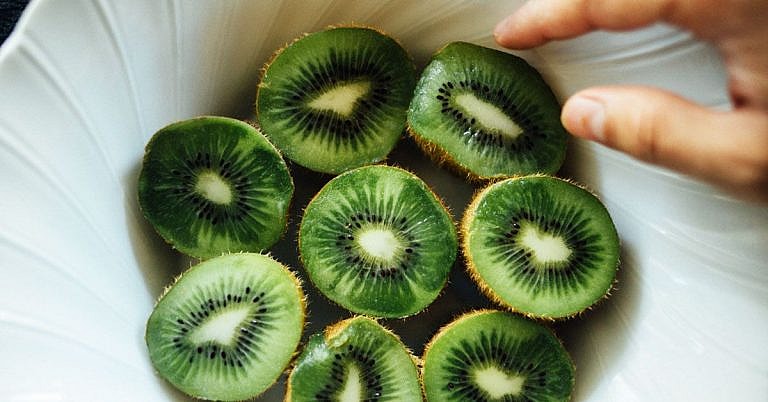GLP-1 Medication Diet: Find the Optimal Nutrition Strategy
A balanced diet rich in high-fiber foods, healthy fats, and vegetables is beneficial when taking GLP-1 medications.
GLP-1 medications, or glucagon-like peptide-1 receptor agonists, treat type 2 diabetes when other medications haven’t sufficiently managed blood sugar levels.

Some GLP-1 agonists, like semaglutide and high-dose liraglutide, are also FDA-approved for treating obesity.
These medications mimic the action of the hormone GLP-1 (glucagon-like peptide-1), which helps manage blood sugar levels by stimulating insulin release, reducing glucagon secretion, and slowing gastric emptying.
Following a balanced diet is important when taking GLP-1 medications because it can help improve the effectiveness of the medication in managing blood sugar levels and weight.
best diet to follow while on GLP-1
The best diet to follow while on GLP-1 medications is one that focuses on whole, minimally processed foods.
Research indicates that managing type 2 diabetes involves focusing on a diet rich in high-fiber foods like vegetables, fruits, legumes, and whole grains while limiting the intake of saturated fatty acids.
Instead, eating more monounsaturated fats and omega-3 polyunsaturated fats can potentially increase GLP-1 secretion, which may be beneficial for type 2 diabetes management.
Some of the best foods to eat while on GLP-1 medications include:
- Eggs: Eggs are rich in protein and monounsaturated fats, which can trigger the release of GLP-1 and other hormones that help you feel full. They also contain many vitamins and minerals that can support overall health.
- Healthy fats: Healthy fats, such as those found in avocados, nuts, and olive oil, are rich in monounsaturated and polyunsaturated fats, which stimulate the release of GLP-1. They’re also important for brain health and hormone production.
- Whole grains: Whole grains, such as oats, brown rice, and quinoa, are high in fiber, which can help improve digestion and regulate blood sugar levels. They also provide a steady source of energy.
- Berries: Berries, such as blueberries and strawberries, are rich in antioxidants, which can help lower inflammation and improve overall health. They’re also low in sugar compared to other fruits.
- Legumes: Legumes, including beans, lentils, and chickpeas, are high in fiber and protein, which can help regulate blood sugar levels and promote digestive health.
- Vegetables: Vegetables like broccoli, carrots, and Brussels sprouts are not only low in calories and rich in nutrients but also high in fiber, potentially helping in the release of GLP-1 and regulating blood sugar levels.
- Leafy greens: Leafy greens, such as spinach, kale, and Swiss chard, are rich in fiber, vitamins, and minerals, which can help regulate blood sugar levels and improve your overall health.
Why does diet matter when taking GLP-1?
By following a balanced diet and lifestyle, you can support the natural release of GLP-1. This can work alongside GLP-1 medications to manage blood sugar levels and weight.
ResearchTrusted Source suggests that combining lifestyle changes, medication, and diet changes to improve the levels of GLP-1 could help manage type 2 diabetes more effectively and lower the risk of long-term complications associated with the condition.
Foods to avoid while on GLP-1
While taking GLP-1 medications, it’s advisable to avoid foods that can cause rapid spikes in blood sugar levels or lower the medication’s effectiveness, such as:
- sugary foods and beverages like juices, soda, and alcohol
- refined carbohydrates like white bread and pasta
- high-fat foods
A study involving 72 participants with obesity revealed that those with high added sugar intake experienced the smallest increase in GLP-1 levels following glucose consumption.
GLP-1 medications can help reduce cravings for foods with fewer nutrients.
By promoting feelings of fullness, these medications can support dietary choices, as you’re less likely to feel hungry or crave high-calorie, low-nutrient foods. This can help with weight loss and improve overall health.
Bottom line
GLP-1 medications, or glucagon-like peptide-1 receptor agonists, treat type 2 diabetes and, in some cases, obesity. They work by mimicking the action of the hormone GLP-1, which helps regulate blood sugar levels.
Having a balanced diet while taking these medications is important to manage blood sugar levels.
Try to focus on foods rich in nutrients, limit sugary and high-fat foods, and listen to your body’s signals of fullness to make more nutritious dietary choices.








# Nutrition